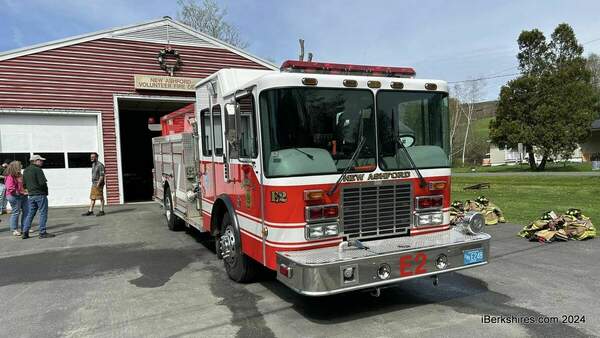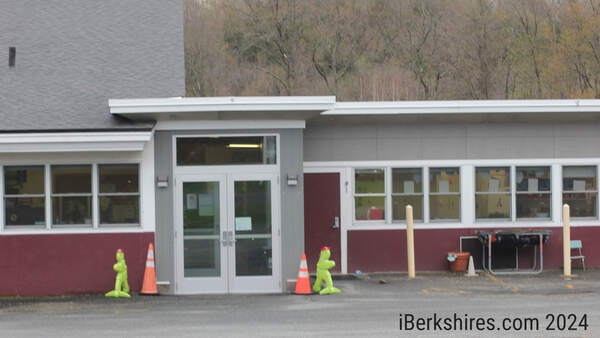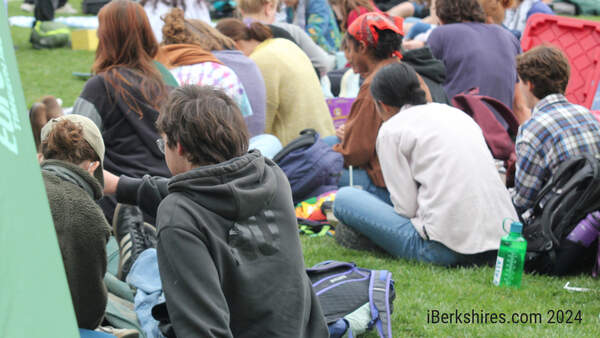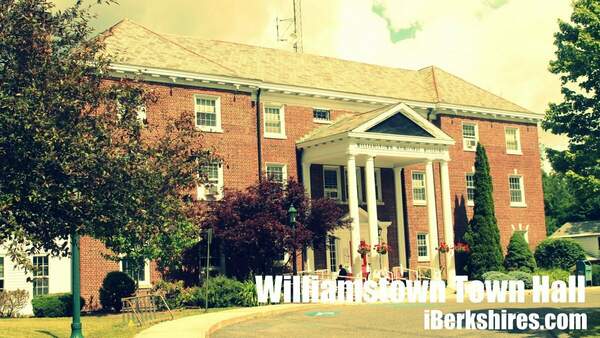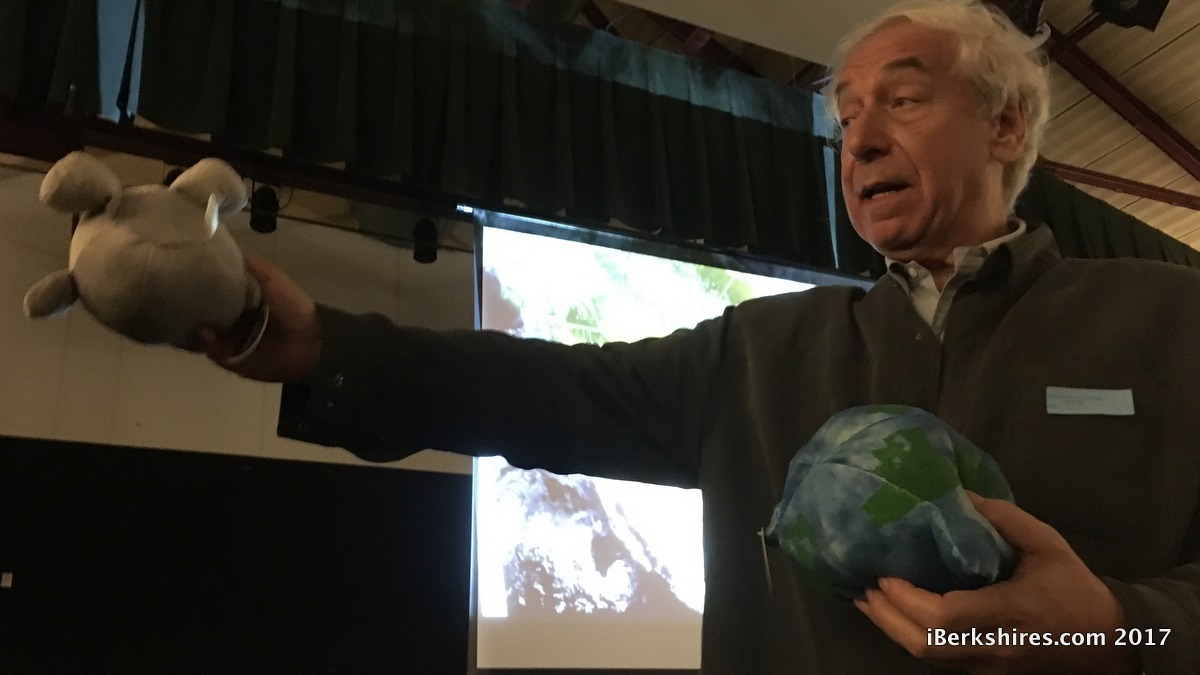
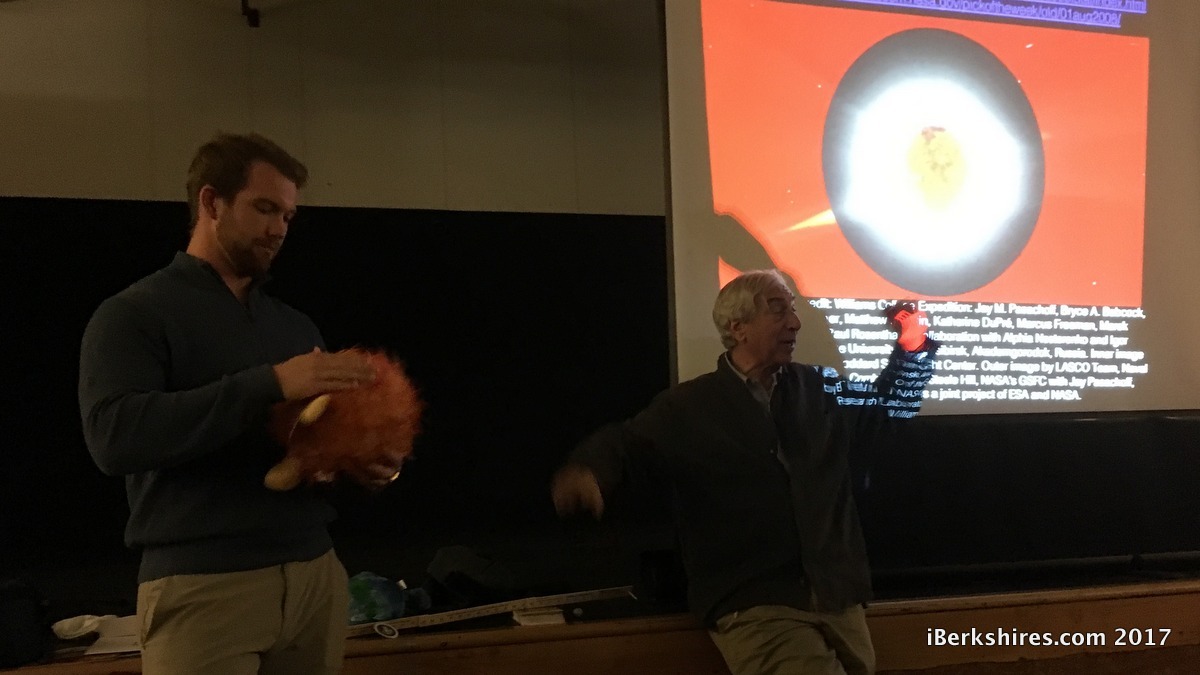
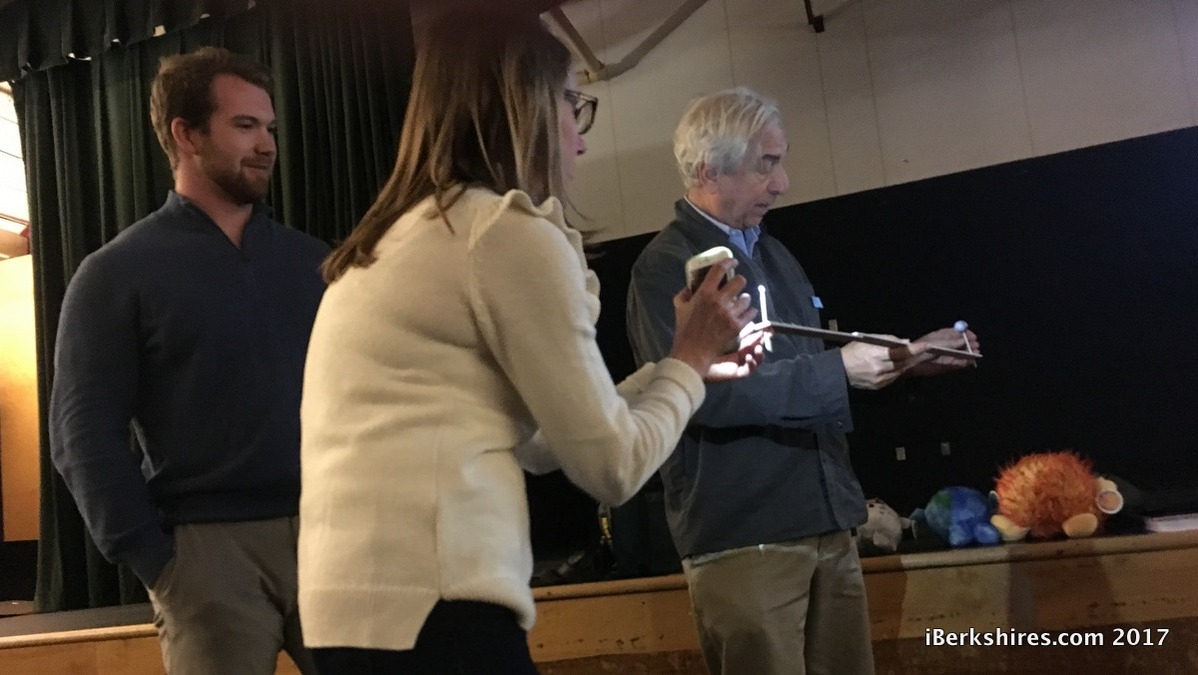
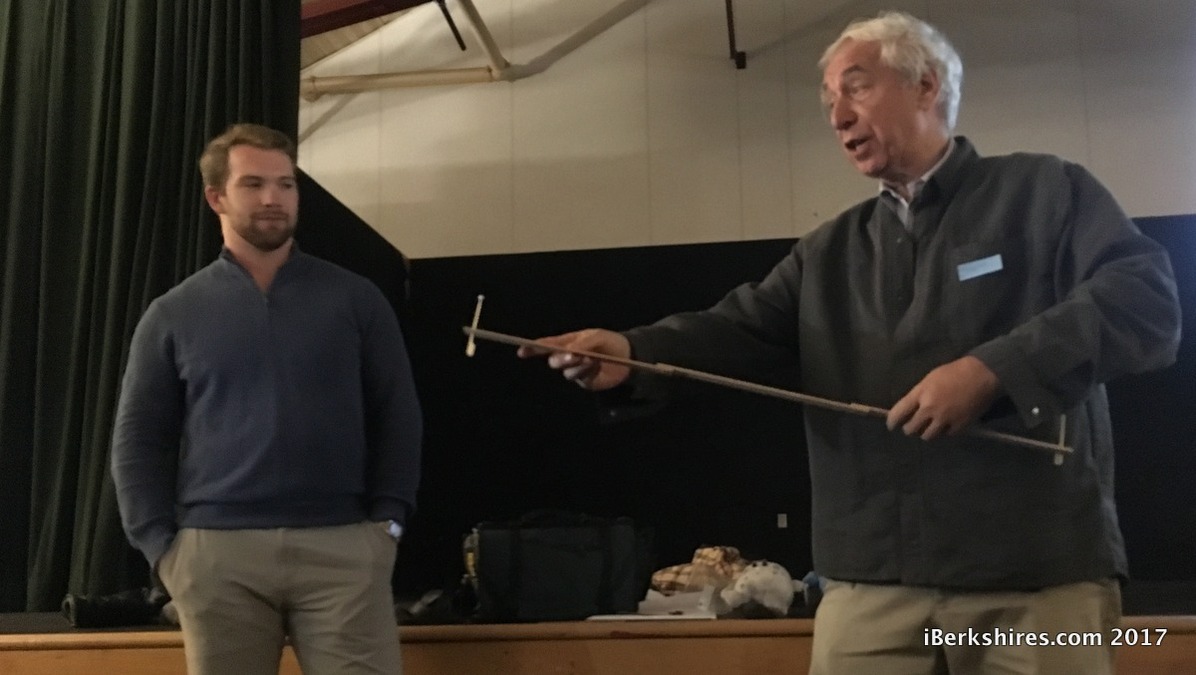
Total Eclipse Preview Enthralls Williamstown Students
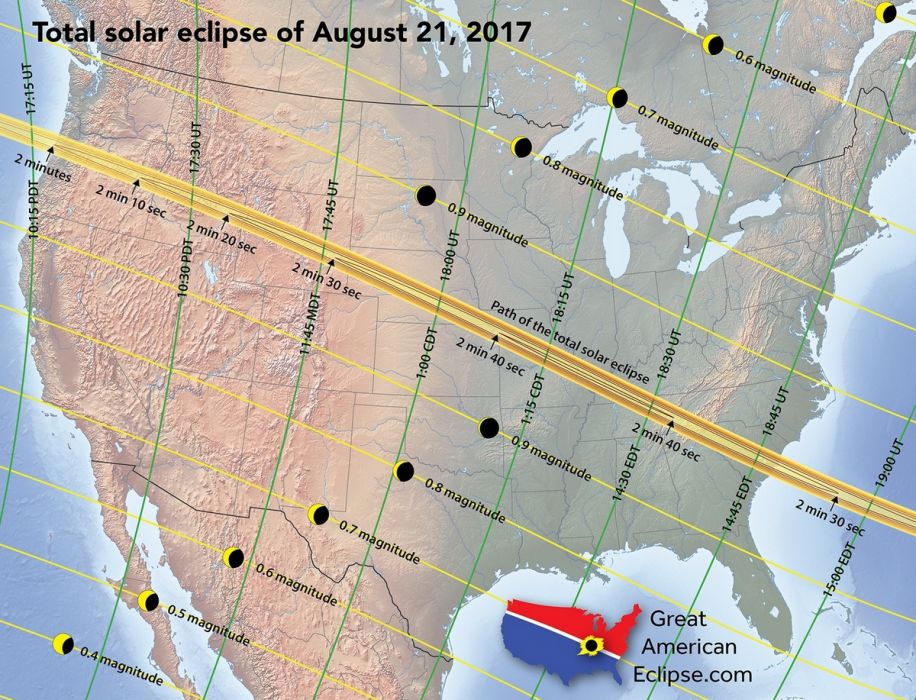
WILLIAMSTOWN, Mass. — Who's up for a road trip this summer?
Maybe the entire fifth and sixth grades at Williamstown Elementary School, after hearing Williams College astronomy professor Jay Pasachoff tell them all about the rare solar eclipse set to take place on Aug. 21 from the coast of Oregon to the coast of South Carolina.
Pasachoff and Williams sophomore Brendan Rosseau came to Williamstown Elementary on April 4 to talk about the eclipse, which will only be at 70 percent strength here, meaning "it won't get very dark and you won't barely know what's happening," he said. But the "path of totality" — where the total eclipse will be seen (the yellow streaks on the maps seen at right), as the moon totally blocks the sun for about a two-minute period — will come as close as points in North Carolina and Tennessee.
You better make your plans sooner rather than later, said Pasachoff, who is leading an international team of astronomers in preparing scientific observations to study the sun's outer layer, the solar corona, and also the effect of the eclipse on the Earth's atmosphere. Also, in less scientific terms, he's helping plan logistics for the first total eclipse across America in 99 years — which was before there were millions of cars on the road and millions of people hearing about the eclipse and maybe wanting to drive to it.
Experts say 12 million people who live within the path of totality, and an additional 76 million people live within a 200-mile drive of the path, according to map-maker Michael Zeiler of Santa Fe.
"No one really knows how big of an event this will be," he said, adding that officials are planning for traffic jams leading to the cities and towns in that "path of totality," likening it to an evacuation after a hurricane warning. "A lot of people are going to drive down to the eclipse. … I'm telling people to leave at midnight."
Maybe that could include some of the Williamstown students themselves, he suggested: "If you can convince your parents to take you into the totality, that would be great.
"We don't get these very often in the United States," he said. "It's a big deal. It's doing to be a bigger deal as it gets closer, as more people find out about it."
Pasachoff himself will fly to Salem, Ore., to view the eclipse. He and his team made the decision to go to Oregon after studying historical weather data at different points of the eclipse's path to try to pinpoint a clear viewing location.
"It's usually clear in this part of the country on Aug. 21," he said.
Pasachoff told the students that he saw his first solar eclipse when he was a little older than them, at the age of 16, and he was hooked. "It was such an exciting thing," he said.
Since then, he has been all over the world. The Aug. 21 event will be his 66th solar eclipse and his 34th total eclipse. He is chair of the International Astronomical Union's Working Group on Solar Eclipses, a joint Working Group of the Solar and the Education/Outreach/Heritage commissions. He is also a member of the Eclipse 2017 Task Force of the American Astronomical Society. At Williams, he is the Field Memorial Professor of Astronomy, and he also holds a visiting appointment at Cal Tech. His degrees are from Harvard, and he is a fellow of the American Physical Society.
"This is a big deal," fifth-grade teacher Frani Miceli said in introducing Pasachoff to the students, calling him an "eclipse chaser." "We are really, really lucky to have him here."
Those who were not so lucky to have seen him at the school can still hear from Pasachoff himself twice this week when he delivers the spring 2017 Williams College Sigma Xi lectures on Thursday and Friday, April 13 and 14. Both lectures will begin at 4:15 p.m. in the Wege Auditorium in the Thompson Science Center and are free and open to the public. The April 13 lecture will be a a general orientation to studies of the sun, while the April 14 lecture will focus on the Aug. 21 eclipse, being called the "Great American Solar Eclipse." (You can find more information about the eclipse on the website dedicated to it.)
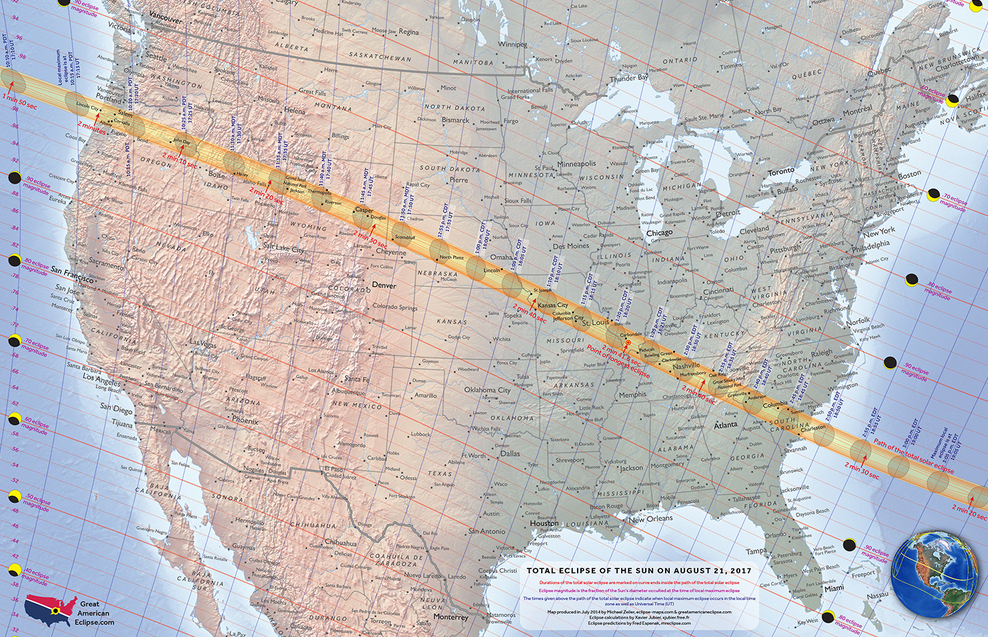
Audience questions at those public lectures likely will be quite different from the questions asked by the WES students.
One student asked him if he had ever visited NASA, which he answered by explaining that NASA has several facilities across the country and he has indeed been to some of them. Those visits, he said, included seeing three launches from the Kennedy Space Center in Florida that were carrying astronaut Stephanie Wilson, a Pittsfield native who Pasachoff said interviewed him as a seventh-grader and who knew even then she wanted to be an astronaut.
Another student asked if it was typical for there to be 100 years between eclipses; he answered by offering a statistic that if you pick a random place on the Earth and wait for an eclipse, the odds are it will be about 300 years to see one.
Another student asked how scientists know exactly where the path of totality will be, which he explained was calculated scientifically looking at things like the moon cycle but that with computers and increased knowledge of how the universe works predictions "keep getting better and better."
And yet another student asked his opinion about whether humans could live on another planet, which he answered by informing the students that scientists are constantly learning about other planets that may have conditions hospitable to life, a so-called "Goldilocks condition" where it's not too hot and not too cold. But he cautioned that although trips are being planned to Mars, and there is a guess that by the year 2030 we will be able to "colonize Mars," the idea of using Mars as an "escape route" from Earth is "not a good idea."
Earth, he said, has the right mix of water and oxygen; in other words, "You know the old saying ‘there's no place like home? That holds true in the solar system," he said.
But with all the knowledge Pasachoff and other scientists have, there is still so much to learn about the universe beyond Earth, Pasachoff told the students, talking about "citizen science" is becoming popular, with everyday people looking at images of planets like Pluto to help continue the progression of scientific knowledge.
"There's still a lot to learn, and maybe some people in this room will make some discoveries," he said.
Tags: eclipse, WES, Williams College,

